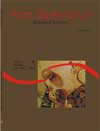<b>Emberizidae species richness and conservation conflicts in the Brazilian Cerrado</b> - DOI: 10.4025/actascibiolsci.v30i1.1453
Abstract
Several variables have been used to indicate conflicts between socioeconomic interests and biodiversity conservation. Thus, efforts to minimize biodiversity losses are being based on the analysis of such conflicts, since there is more and more evidence that important sites to conservation could support high population densities and their impacts. However, in the Cerrado this might not be true due to the technological progress associated with human settlement. Consequently, the aim of this paper was to verify whether human population density (H) revealed conservation conflicts in the Cerrado. Through multiple regressions of Emberizidae richness (spilt into three groups according to their occurrence) as a biodiversity index and land-use variables, we verified that human population density was not the best indicator of conservation conflicts. Modern agriculture and cattle ranching indexes were the best indicators for the three Emeberizidae groups. Thus, the use of H as model selection to designate conservation units can be a mistake for Emberizidae species richness. In the Cerrado region, variables linked to modern agriculture and cattle ranching should be taken into account during systematic conservation planningDownloads
Download data is not yet available.
Published
2008-03-28
How to Cite
Barreto, B. de S., Oliveira, G. de, Pinto, M. P., Bini, L. M., Diniz Filho, J. A. F., & Blamires, D. (2008). <b>Emberizidae species richness and conservation conflicts in the Brazilian Cerrado</b> - DOI: 10.4025/actascibiolsci.v30i1.1453. Acta Scientiarum. Biological Sciences, 30(1), 67-72. https://doi.org/10.4025/actascibiolsci.v30i1.1453
Issue
Section
Ecology and Limnology
DECLARATION OF ORIGINALITY AND COPYRIGHTS
I Declare that current article is original and has not been submitted for publication, in part or in whole, to any other national or international journal.
The copyrights belong exclusively to the authors. Published content is licensed under Creative Commons Attribution 4.0 (CC BY 4.0) guidelines, which allows sharing (copy and distribution of the material in any medium or format) and adaptation (remix, transform, and build upon the material) for any purpose, even commercially, under the terms of attribution.
Read this link for further information on how to use CC BY 4.0 properly.
0.6
2019CiteScore
31st percentile
Powered by 

0.6
2019CiteScore
31st percentile
Powered by 











1.png)




3.png)













